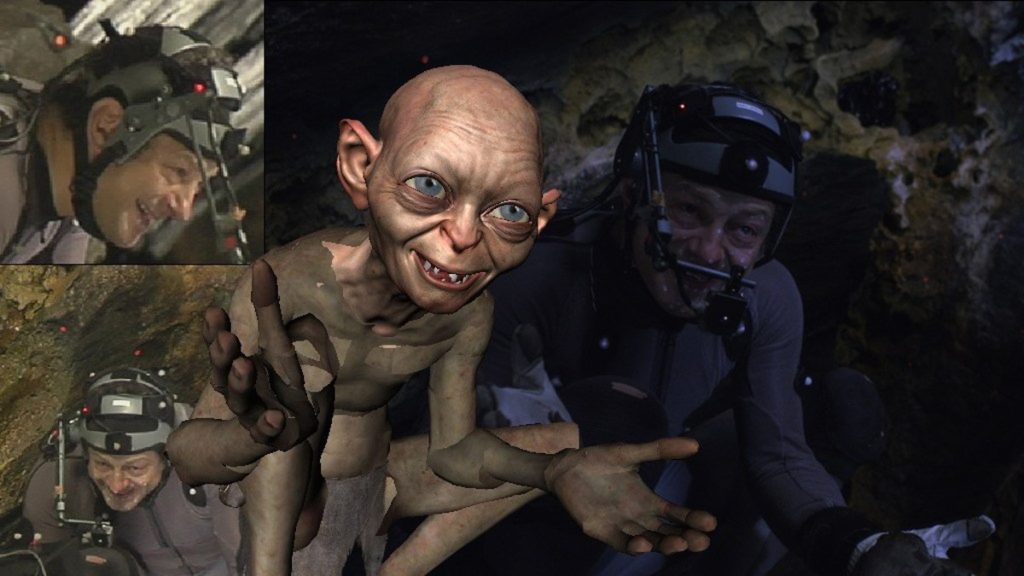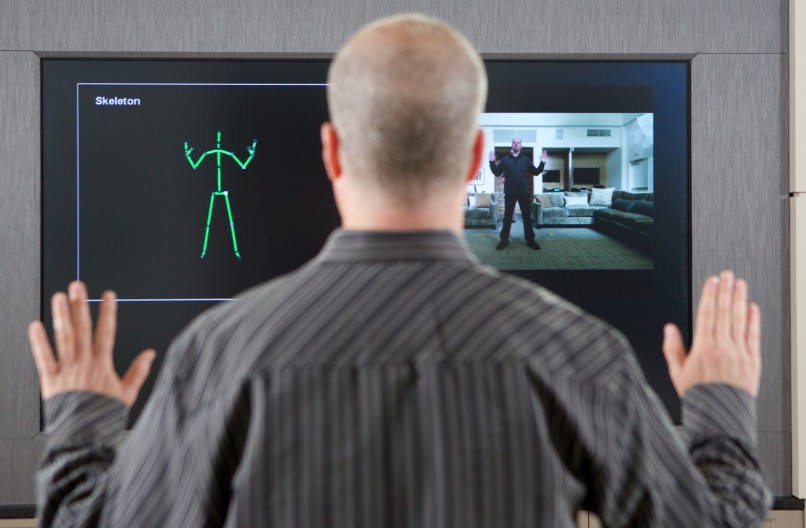Entering a virtual environment without using motion tracking technology really doesn’t bear thinking about. You see, motion tracking, which is the digitizing of movement so as to be used by computers, is vitally important for creating a top quality Virtual Reality experience.
Without VR motion tracking, you would find yourself somewhat restricted in the virtual world, unable to look around, move, and explore. The best case scenario would be to use a gamepad in order to control movement within the virtual environment, but that would only serve to shatter your feeling of immersion.
Being able to engage and interact with the virtual world the moment you pull on your VR headset - without any reminders of the real world - is crucial to the creation of an immersive experience.
In the real world, we use our hands, we twist our bodies, we move our heads, and the virtual world must mimic this movement. Naturally, there will be times when a Virtual Reality experience might call for more sedentary involvement, i.e. a flight simulator where you are sat in a cockpit using a joystick.
But there will be nuances that make or break your state of immersion. Being able to naturally turn and look out the window, or glance down at your virtual dashboard, will keep the illusion going.
To that end, there already exist a number of different methods and technologies to help make the most of exploring a virtual environment. But how do they work? And where should you begin with choosing what’s right for your particular VR experience?
Well, in this article, we’ll have a quick review of the fundamentals of this most important technology and the options that are currently available. But first…
What Is Being Tracked by Motion Tracking?
First, it’s important to truly understand how an object is able to move in three dimensional space. This is best explained by the concept called the six degrees of freedom (6DoF), which refers to the freedom of movement of a rigid body in 3D space.
Essentially, the body is free to move forwards or backwards, up or down, and left to right. Or in other words, in three perpendicular axes. This is then combined with rotation around these axes, often terms as the pitch, yaw, and roll.
So, any motion tracking system worth its salt has to be able to measure the movement across all of those various degrees.
Motion Tracking Technologies
There exists a few options to support the tracking of movement, and these are broadly categorized as optical and non-optical tracking.
Optical tracking uses image sensors to track the movement of the body. Meanwhile, non-optical tracking makes use of a number of sensors that can be installed in hardware or attached to the body, however the more advanced options can also use sound waves or magnetic fields.
Most modern tracking systems actually combine the optical and non-optical methods so as to increase accuracy, and as these sensors continually improve, it has led to the development of smaller and more accurate systems.
Optical Motion Tracking for Virtual Reality
The optical methods utilized for motion tracking typically use cameras in order to track movement of an individual. The person who is being tracked is required to wear optical markers, which are placed on certain parts of the body. Additionally, these can be placed on handheld controllers or an HMD (Head Mounted Display).
You might be familiar with this concept of motion tracking if you have ever watched a behind-the-scenes feature for a film like The Lord of the Rings: The Two Towers or The Rise of the Planet of the Apes, where actor Andy Serkis - something of a pioneer within the industry - would be wearing a suit covered in highly reflective markings so that the cameras could track and record his movements in real time.

Andy Serkis as Gollum.
Source: Pinterest.com
However, the commercial systems that are used for Virtual Reality motion capture will only use a few strategically placed markers, if they use any at all.
How Does It Work?
When everything is setup to track movement, the cameras that are able to calculate depth will register the marker and map it into the 3D environment.
These reflective markings are also called “passive markers” due to their propensity to reflect light. And, as you would expect, this means there is a corresponding form of tracking which uses “active markers”. These are LEDs, controlled by computers, which afford users much greater accuracy when tracking movement.
Due to the fact that these LEDs need to be powered means active markers are not widely used for consumer VR devices. Most HMDs on the market which use markers for motion tracking have passive markers.
And yet, one of the most notable exceptions is that of the Sony PlayStation Move motion controller. It uses a large light which is followed by the console via a camera. Although it’s not quite as advanced as those active markers used by the movie studios that have given us Gollum and Caesar, the PlayStation’s controllers are further supported by non-optical sensors to improve its accuracy.
Other Notable Examples
The most popular consumer motion capture device - and probably the most successful too - is undoubtedly Microsoft’s Kinect. Interfacing with the Xbox (both the 360 and the One) and Windows computers, the Kinect is able to perform incredibly complex feats of motion tracking, all without using active or passive markers.

Microsoft Kinect
Source: Xbox.com
Its camera just has to be able to view the person standing in front of it. And the very latest version can follow up to six individuals at the same time. However, despite the use of some very innovative software and boundary pushing depth sensing and infrared cameras, it is as yet unable to mirror the precise nature of the marker-based motion platforms.
A further example of a tracking system that does not rely on markers is Leap Motion. If attached to an HMD, this device can track the hand movement of the user, allowing for a natural option for interaction within a virtual environment.
The Next Step for Optical Tracking
The next logical step for commercial VR systems will be to track the full body. However systems that rival those professional (and expensive) ones are likely quite far off.
Most VR hardware is designed to be enjoyed while safely seated, or strapped into an omni treadmill. Wandering around unsupervised while wearing a VR HMD is literally setting yourself up for a fall.
That being said, the talented team at SteamVR have developed something that might just change that scenario. It’s called the Lighthouse tracking system, and it’s a laser-based tracking device that can pinpoint passive markers attached to the SteamVR controllers and HMDS. It then maps objects in the room and serves up some essential safety measures to stop you from hurting yourself as you move around the virtual environment.
Non-optical Motion Tracking for Virtual Reality
You may not realize this, but the VR equipment currently available are all likely to contain small electromechanical sensors. These are typically gyroscopes, magnetometers, and accelerometers, and they fall under the category of non-optical tracking.
Microscopic in size, these sensors are used to measure and track particular movements. For example, the accelerometer measures movement along the three dimensional XYZ axis, while the gyroscope measures rotation around 360 degrees. And the magnetometer can measure the direction of a magnetic field, which means it can determine which way magnetic North is, for instance.
These sensors are now incredibly cheap, small, and accurate, thanks in large part to the technological strides made within the auto, aviation, and computer hardware industries. They are now a mainstay in all modern smartphone and tablet devices, and VR headsets have followed suit.
How Does It Work?
When combined, these three little sensors provide incredibly precise motion tracking data, with very low latency. And when supplemented by optical tracking methods, including the active or passive markers or infrared cameras, these non-optical tracking devices offer a robust and rounded motion tracking solution.
But when it comes to a self-contained system, these sensors are more than able to hold their own. You only have to look at the sheer number of Virtual Reality smartphone apps and headsets available today for evidence of that assertion.
Other Notable Examples
The alternative non-optical methods out there are encroaching on the realms of science fiction - but they are very much science fact.
Take, for example, direct electro-mechanical tracking of body movement. In a VR context, this could be achieved via a haptic glove, which would sense when you are flexing your fingers, therefore converting that movement into signals for tracking.
To see this in action, have a look at GloveOne from NeuroDigital.
Another method is the use of an exoskeleton, which can provide haptic feedback in addition to capturing motion. Now, these are some way away from being commercially available (the Gypsy motion capture suit costs a cool $7995!) but the strides being made by companies such as Dexmo are encouraging.
Finally, the Virtuix Omni treadmill is yet another example of a mechanical motion tracker. Not only does it allow the user to run in any and all directions within the virtual environment, but it also tracks and measures movement, albeit somewhat crudely in comparison to the other methods already mentioned.
What Does the Future Hold?
It’s clear that there are a number of existing and potential technologies out there that will have a far-reaching impact on the Virtual Reality industry.
By the time the bells ring out signaling the start of a new year, the total number of VR users will exceed 43 million. This is a market on the move, projected to be worth $30bn by 2020.
And it’s certain that both the non-optical and optical tracking methods will be utilized in these motion tracking platforms for quite some time. But the ultimate goal of VR technology is surely to transport and immerse the user into an entirely virtual environment; one where they do not need to move their limbs and their head at all in order to explore.
As sensors are further improved, and electronics continue to get smaller - not to mention the work happening in the field of nanotechnology - the idea that you might soon be able to experience a Matrix-like level of immersion isn’t all that far-fetched.
For now, however, you must avail yourself of the motion capture technology at your disposal if you want to make the most of today’s Virtual Reality systems.
How Can Appeal-VR Help?
With the advancements in motion tracking, and the non-optical tracking systems present in modern smartphones, there exists an opportunity to really make waves in your chosen industry through the development of a cutting edge Virtual Reality application.
Thanks to our unrivalled experience in custom VR app development across a number of diverse business verticals, we can guide your innovative app concept through the all-important design and development stages. We’ll then create an effective application that will transform your business and make your industry sit up and take notice.
So, are you ready to take the first step towards making your VR app idea a reality?
Speak with one of our app experts today to get started.

 (3 votes, average: 4.33 out of 5)
(3 votes, average: 4.33 out of 5)